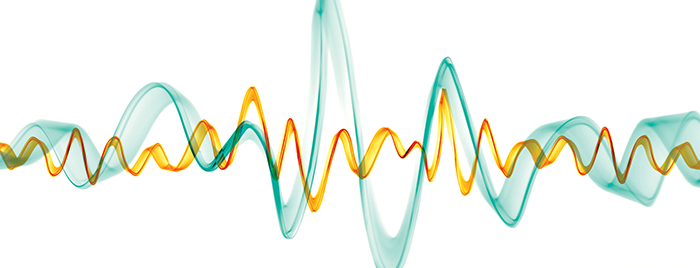The difference between hearing and a lifetime of silence sometimes lies in the integrity of tiny inner ear proteins. Before Marcos Sotomayor, Ph.D., began studying these proteins, very little was known about hearing at the molecular level. The Sotomayor Research Group, part of the department of chemistry and biochemistry at The Ohio State University, models the intricate structures of these proteins using Nanoscale Molecular Dynamics (NAMD) software run through the Ohio Supercomputer Center (OSC)’s Oakley Cluster. The group aims to more deeply understand the mechanics of hearing and what can impair it.
We experience sound when pressure from sound waves is transformed into an electrical signal sent to the brain. Vibrations push on tiny, hair-like structures in the cochlea called stereocilia, which are arranged in bundles. Each stereocilia is connected to its neighbors by protein filaments called tip links. When the stereocilia bend, the tip links stretch, opening an ion channel that allows potassium to flow into the cell, generating an electrical signal the brain interprets as sound. Hearing loss occurs when tip link proteins are mutated in hereditary deafness or when they stretch too far and break.
“If you go to a rock concert and put your ear next to the speaker, some tip links may break and your threshold for hearing goes up for a few hours, maybe a day, and the next day you recover, as tip links regenerate,” Sotomayor said. “In some cases, a person’s tip link proteins are mutated and tip links never form, leading to deafness.”
To study tip link proteins more closely, Sotomayor’s group puts the tip link protein DNA into bacteria to produce the protein. They then crystallize the proteins, which allows them to use X-ray crystallography to obtain the protein structure. This structure is then modeled and tested at length in computer simulations through the use of OSC. With the speed of HPC processing, researchers can stretch, break and test the proteins under certain conditions to observe their limitations and function.
“The details matter here,” Sotomayor said. “Each atom is important. So that requires very large computations for long time scales, and in that sense, using Oakley has been really, really nice for us.”
By gaining a basic understanding of the structure and function of tip link proteins, Sotomayor’s work could have great potential in treating hearing disorders, such as hereditary deafness.
Project Lead: Marcos Sotomayor, Ph.D., The Ohio State University
Research Title: Molecular mechanisms of cadherin dynamics and force transduction
Funding Source: National Institutes of Health
Website: research.cbc.osu.edu/sotomayor.8

